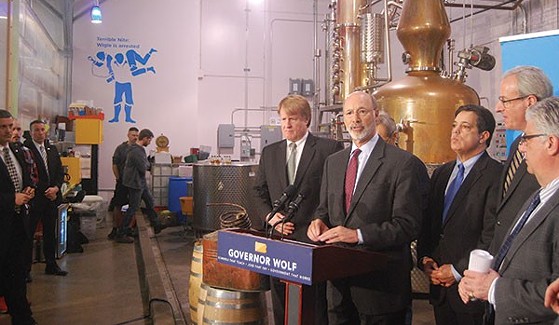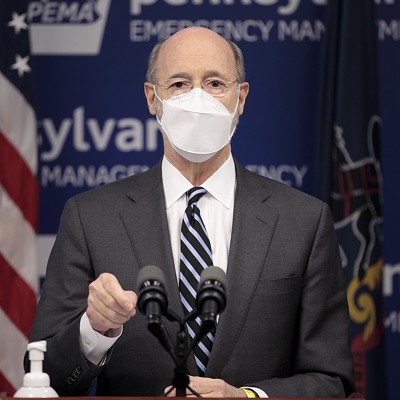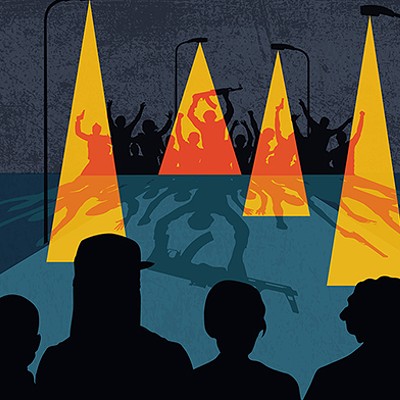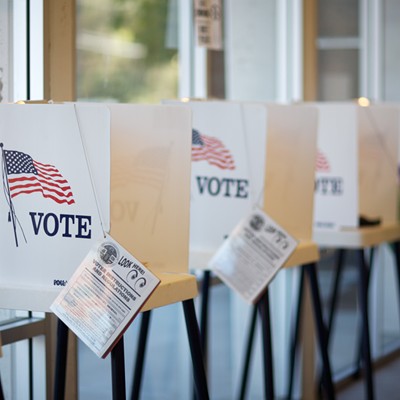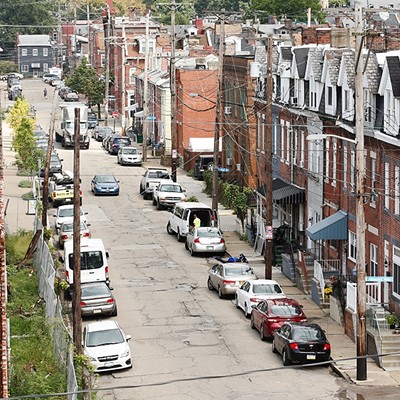Wednesday, February 15, 2017
Why a small item in Gov. Wolf’s budget proposal is a big deal for Pennsylvania public transit
Expanding Allegheny County’s public-transit network is an idea that has wide-reaching support. Residents in low-income neighborhoods say they need more buses because that is their only means of getting around affordably. Wealthier neighborhoods often desire a light-rail system that connects to Downtown and other hip neighborhoods. And while finding additional funds has proven extremely difficult, Gov. Tom Wolf is proposing a fix that would at least stop cash from funneling out of Pennsylvania’s public-transit fund.
For the past several years, a growing chunk of the Pennsylvania's motor vehicle fund has been siphoned off to pay for an increasing number of Pennsylvania State Police troopers. (Monies from the fund are used to pay for a multitude of projects, including bridge and road construction.) Last year, state legislators responded by passing a rule limiting PennDOT’s allocation for state police, and mandated that allocation shrink by 4 percent each year until it’s reduced to $500 million. But Gov. Wolf is going even further and is proposing moving the state-police funding out of the motor vehicle fund entirely.
In his 2017-2018 budget, Wolf wants to fund the troopers through a $25-per-person fee, for towns that rely solely on the service of state police, instead of taking money from the motor vehicle fund. "Nothing else in life is free," said Wolf of state police in Allentown’s Morning Call in February, "and this isn't either."
Chris Sandvig, a transit expert at Pittsburgh Community Redevelopment Group, says that under the current circumstances, the motor vehicle fund is obligated to pay for both road construction projects and state police, meaning funding for state police is in direct conflict for money that could go to improve our roads. Sandvig says that as the motor vehicle fund is increasingly taken over to pay for state police, then money to build road constructions could then be in conflict with funds for public-transit improvements.
And Sandvig says more and more small municipalities are using state troopers to police their towns. In fact, statewide news website Keystone Crossroads reported in May 2016 that more than half of Pennsylvania municipalities fully rely on state troopers for police service.
“The users of the highway system are paying for state troopers in towns that don’t want to pay for police,” says Sandvig.
Sandvig says the more money used from the motor vehicle fund to pay for state police means a significant chunk is unavailable to pay for potential public-transit projects. In 2010, the motor vehicle fund contributed $530 million to state police, and in 2016 it had ballooned to $839 million. “If it continues at this rate, it’s on track to a hit a billion dollars this year,” says Sandvig. “This is unsustainable, and something needs to be done.”
Currently, the motor vehicle fund is primarily funded from a tax on gasoline and a fee collected through motor-vehicle registration. Sandvig is pleased with the governor’s proposal. “So many people put so much work into funding public transportation, and the money we pay at the pump should go to transportation," says Sandvig.
Wolf’s proposal needs support from the state legislature before becoming law, but state Republicans, who control both the House and Senate are open to negotiating a fee on municipalities.
For the past several years, a growing chunk of the Pennsylvania's motor vehicle fund has been siphoned off to pay for an increasing number of Pennsylvania State Police troopers. (Monies from the fund are used to pay for a multitude of projects, including bridge and road construction.) Last year, state legislators responded by passing a rule limiting PennDOT’s allocation for state police, and mandated that allocation shrink by 4 percent each year until it’s reduced to $500 million. But Gov. Wolf is going even further and is proposing moving the state-police funding out of the motor vehicle fund entirely.
In his 2017-2018 budget, Wolf wants to fund the troopers through a $25-per-person fee, for towns that rely solely on the service of state police, instead of taking money from the motor vehicle fund. "Nothing else in life is free," said Wolf of state police in Allentown’s Morning Call in February, "and this isn't either."
Chris Sandvig, a transit expert at Pittsburgh Community Redevelopment Group, says that under the current circumstances, the motor vehicle fund is obligated to pay for both road construction projects and state police, meaning funding for state police is in direct conflict for money that could go to improve our roads. Sandvig says that as the motor vehicle fund is increasingly taken over to pay for state police, then money to build road constructions could then be in conflict with funds for public-transit improvements.
And Sandvig says more and more small municipalities are using state troopers to police their towns. In fact, statewide news website Keystone Crossroads reported in May 2016 that more than half of Pennsylvania municipalities fully rely on state troopers for police service.
“The users of the highway system are paying for state troopers in towns that don’t want to pay for police,” says Sandvig.
Sandvig says the more money used from the motor vehicle fund to pay for state police means a significant chunk is unavailable to pay for potential public-transit projects. In 2010, the motor vehicle fund contributed $530 million to state police, and in 2016 it had ballooned to $839 million. “If it continues at this rate, it’s on track to a hit a billion dollars this year,” says Sandvig. “This is unsustainable, and something needs to be done.”
Currently, the motor vehicle fund is primarily funded from a tax on gasoline and a fee collected through motor-vehicle registration. Sandvig is pleased with the governor’s proposal. “So many people put so much work into funding public transportation, and the money we pay at the pump should go to transportation," says Sandvig.
Wolf’s proposal needs support from the state legislature before becoming law, but state Republicans, who control both the House and Senate are open to negotiating a fee on municipalities.
Tags: Governor Tom Wolf , Pittsburgh Community Redevelopment Group , Pennsylvania State Police , Image


